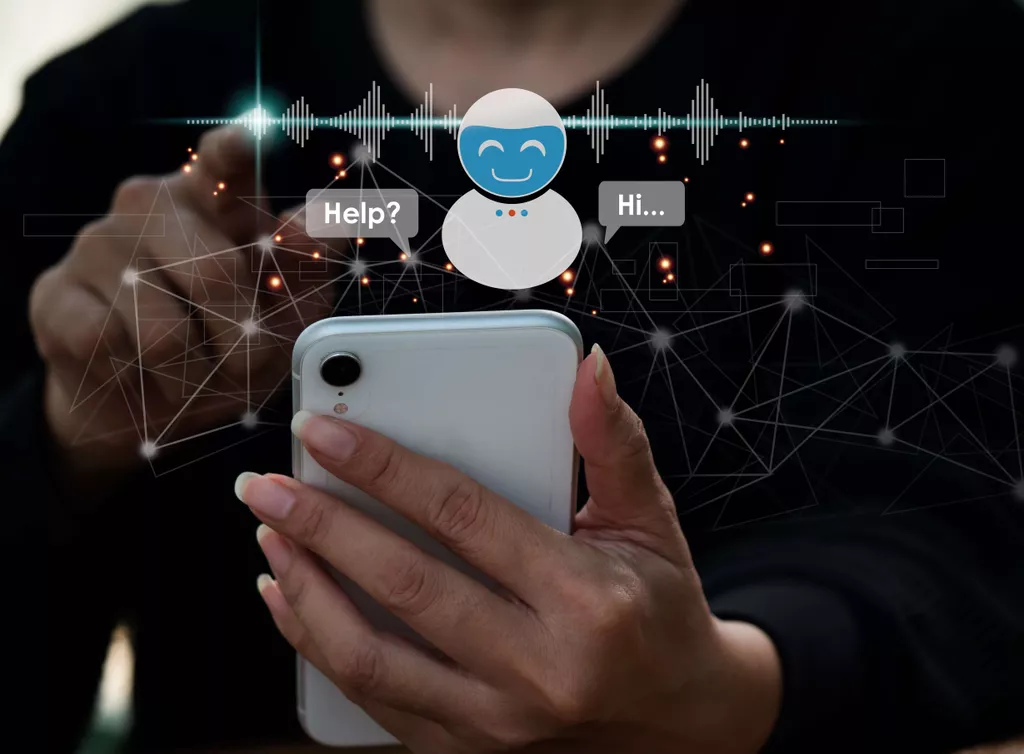
Modern RPA tools can automate applications across an enterprise in any department. They can then create bots using a Graphical User Interface & various intuitive wizards. Also, this platform lowers the cost of setup, training, and deployment. We implement advanced automation features that are capable of making business specific decisions.
- Read one of our customer success stories to know how Flatworld automated Loan Quality Investment (LQI) Process for a Mortgage Company in US using Cognitive process automation.
- Data governance is essential to RPA use cases, and the one described above is no exception.
- When it comes to FNOL, there is a high variability in data formats and a high rate of exceptions.
- Once assigned to the project, our team is first trained to configure the solutions as per your needs.
- Middle management can also support these transitions in a way that mitigates anxiety to ensure that employees remain resilient through these periods of change.
- The automation of resource-intensive tasks such as document management, document indexing, invoice management etc. helps in eliminating manual intervention altogether.
It identifies processes that would be perfect candidates for automation then deploys the automation on its own, Saxena explained. “Both RPA and cognitive automation enable organizations to free employees from tedium and focus on the work that truly matters. While cognitive automation offers a greater potential to scale automation throughout the enterprise, RPA provides the basic foundation for automation as a whole. Trusted by the likes of AIG and Zest, ContractPodAI helps business leaders to create quickly and easily search, and management agreements of any type, automating and streamlining the lifecycle of modern contracts. The technology can also help with processes like data privacy reviews and RFP reviews, depending on your organisational needs.
Streamline and Optimize Processes
Additionally, large RPA providers have built marketplaces so developers can submit their cognitive solutions which can easily be plugged into RPA bots. When it comes to choosing between RPA and cognitive automation, the correct answer isn’t necessarily choosing one or the other. Generally, organizations start with the basic end using RPA to manage volume and work their way up to cognitive and automation to handle both volume and complexity. It is possible to use bots with natural language processing capabilities to spot any mismatches between contracts and invoices.

It can also improve customer service while allowing you to focus your resources on more critical, human-centered tasks. Intelligent automation creates efficiency and cost advantages that give your business a competitive edge. Autonomous software robots functioning under AI technologies to mimic human intelligence and learning processes. World organizations are thinking about how to speed up digital change without making things worse.
Exception Handling Based on Rules
Since intelligent RPA performs tasks more accurately than humans and is involved in day-to-day tasks, organizations immediately experience their effect on production. RPA is a software technology used to easily build, deploy, and manage software robots to imitate human actions in interactions with digital systems and software. The tasks RPAs handle include information filling in multiple places, data reentering, copying, and pasting. According to experts, cognitive automation falls under the second category of tasks where systems can learn and make decisions independently or with support from humans.
- Overall, cognitive software platforms will see investments of nearly $2.5 billion this year.
- As an organization that looks to embrace the world of automation, both RPA and Cognitive intelligence bring a lot to the table.
- This custom solution is ideal for companies who want to eliminate human intervention from dull, repetitive tasks that require little or no judgement.
- Orchestration tools are the command dashboards used to manage the activity of multiple bots, configure them, change access levels, open up data sources, etc.
- For instance, the call center industry routinely deals with a large volume of repetitive monotonous tasks that don’t require decision-making capabilities.
- This means using technologies such as natural language processing, image processing, pattern recognition, and — most importantly — contextual analyses to make more intuitive leaps, perceptions, and judgments.
To maximize efficiency, Chart Industries deployed a process automation vendor, Celonis. Using machine learning to identify patterns and irregularities, Celonis’s technology identifies business accounting processes and determines and performs the corresponding processes. Chart was able to save an annual amount of $240,000 from late payments alone. An increase in productivity, improved business processes, and clearer data all come together to create an exceptional customer experience. Organizations can produce higher-quality results quickly, improving the product or service being offered to their customers.
Cognitive automation vs traditional automation tools
Unfortunately, things have changed, and businesses worldwide are looking for automation for clerical and administrative tasks. RPA enables organizations to drive results more quickly, accurately, and tirelessly than humans. When considering how you can digitally transform your business, you first need to consider what motivates you to do so in the first place, as well as your current tech setup and budget. For many companies, leapfrogging over RPA and starting with cognitive automation might seem like trying to run before you can walk.
Nowadays, consumers demand a more efficient and personalized service, and only businesses with robotic process automation can meet their demand. With more customer demand and an error-free level of expectancy, RPA will remain more relevant in the long run. Additionally, while robotic process automation provides effective solutions for simpler automations, it is limited on its own to meet the needs of today’s fast-paced world.
Cognitive Process Automation Services We Offer
Cognitive software platforms will see Investments of nearly 2.5 billion dollars this year. Spending on cognitive related IT and business services will reach more than 3.5 billion dollars. The foundation of cognitive automation is software that adds intelligence to information-intensive processes. It is frequently referred to as the union of cognitive computing and robotic process automation (RPA), or AI. Your automation could use OCR technology and machine learning to process handling of invoices that used to take a long time to deal with manually.
What is the difference between RPA and cognitive automation?
RPA is a simple technology that completes repetitive actions from structured digital data inputs. Cognitive automation is the structuring of unstructured data, such as reading an email, an invoice or some other unstructured data source, which then enables RPA to complete the transactional aspect of these processes.
Traditional RPA is primarily limited to automating tasks that require quick, repeated operations without considerable contextual analysis or handling eventualities (which may or may not involve structured data). In other words, the automation of business processes they offer is primarily restricted to completing activities according to a strict set of rules. Because of this, RPA is sometimes referred to as “click bots,” even though most applications nowadays go well beyond that. There are a number of advantages to cognitive automation over other types of AI. They are designed to be used by business users and be operational in just a few weeks.
Business Process Management
Both refer to the use of automation to enhance processes through cutting-edge technologies and improvements. In doing so, these tools contribute to quality improvements in automation results and benefits customers with their quality interactions. For instance, digital workers can automatically cross-check systems for compliance assurance, and they standardize and document processes for easier auditability. With less time spent on manual tasks, staff members can take on more complex and creative work.
What are five example of cognitive?
Examples of cognition include paying attention to something in the environment, learning something new, making decisions, processing language, sensing and perceiving environmental stimuli, solving problems, and using memory.
Tasks can be automated with intelligent RPA; cognitive intelligence is needed for tasks that require context, judgment, and an ability to learn. Seetharamiah added that the real choice is between deterministic and cognitive. “Go for cognitive automation, if a given task needs to make decisions that require learning and data analytics, for example, the next best action in the metadialog.com case of the customer service agent,” he told Spiceworks. The Kofax platform offers everything from intelligent integration between modern and legacy systems to process orchestration, and document intelligence. You can even apply cognitive capture and artificial intelligence components to unstructured data to automate the extraction of data from a range of environments.
The Uses of Intelligent Automation for Utilities and Energy Companies
It then uses this knowledge to make predictions and credible choices, thus allowing for a more resilient and adaptable system. Cognitive automation can only effectively handle complex tasks when it has studied the behavior of humans. With the advent of cognitive intelligence, AI aims to adapt the technology so humans can interact with it naturally and daily. They aim to develop a machine that can listen and speak, understand grammatical context, understand emotion and feelings and recognize images.
- In this category, we find technologies like robotic process automation (RPA), business process management (BPM), and artificial intelligence (AI) (RPA).
- If cognitive intelligence is fed with unstructured data, the system finds the relationships and similarities between the items by learning from the association.
- Today RPA bots aren’t capable of responding to changes in the system without human interaction.
- According to insights developed by McKinsey&Company, RPA offers the potential ROI of % in the first year of use alone.
- Cem’s work has been cited by leading global publications including Business Insider, Forbes, Washington Post, global firms like Deloitte, HPE and NGOs like World Economic Forum and supranational organizations like European Commission.
- The automation allows human workers to focus on interpreting and analyzing data instead of mindlessly entering that data.
Which is cognitive automation platform?
Cognitive automation uses specific AI techniques that mimic the way humans think to perform non-routine tasks. It analyses complex and unstructured data to enhance human decision-making and performance.
